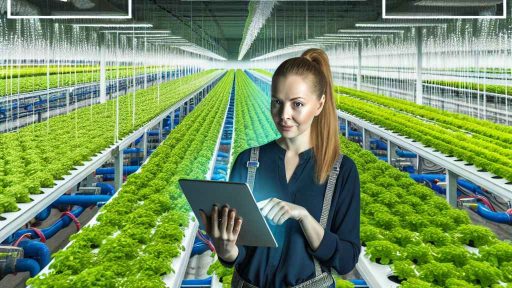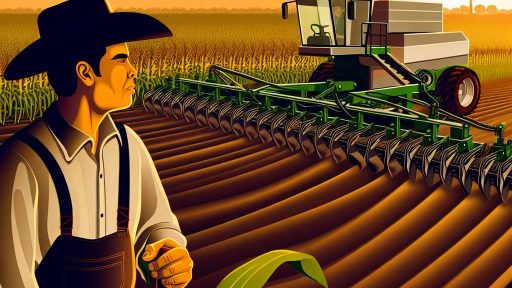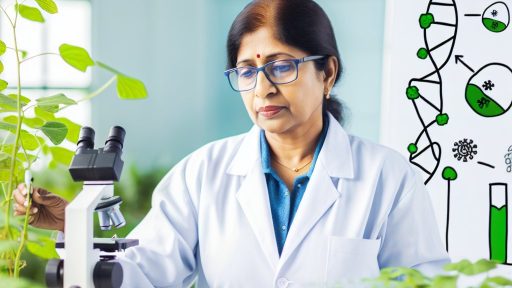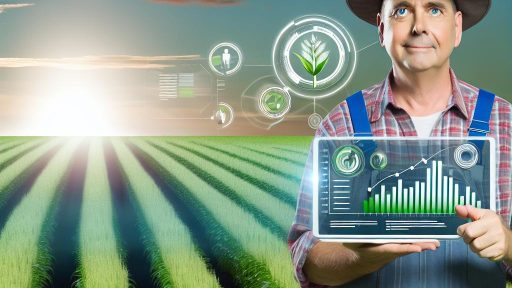Introduction to Drone Technology in Agriculture
Drone technology is rapidly changing agricultural practices.
Farmers now use drones to improve efficiency and yield.
These aerial devices offer various functionalities and benefits.
Overview of Drone Applications
Drones provide a means for effective crop monitoring.
This technology helps farmers assess crop health frequently.
Moreover, drones enable precise irrigation management.
Farmers can now tailor water application based on need.
In addition, drones facilitate timely pest detection.
Benefits of Using Drones
Drones significantly reduce the time required for field surveys.
They cover vast areas quickly, providing valuable data.
Additionally, drones enhance data accuracy for better decision-making.
This leads to reduced operational costs and increased profits.
Farmers benefit from real-time insights into their fields.
Technological Advancements in Drones
Recent advancements improve drone capabilities in agriculture.
High-resolution cameras capture detailed imagery of crops.
Transform Your Agribusiness
Unlock your farm's potential with expert advice tailored to your needs. Get actionable steps that drive real results.
Get StartedSensors provide essential data on plant health and soil quality.
Furthermore, artificial intelligence enhances data analysis.
This allows for more informed agricultural practices.
Case Studies of Successful Drone Implementation
Many farms successfully integrate drone technology today.
For instance, GreenField Farms improved yield by 20% using drones.
In another case, Urban Acreage utilized drones for efficient pest control.
Such success stories highlight the transformative potential of drones.
As a result, more farmers adopt this technology each year.
Benefits of Using Drones in Farm Operations
Enhanced Crop Monitoring
Drones provide real-time monitoring of crops from above.
This technology allows farmers to spot issues quickly and efficiently.
Consequently, they can assess the health of their crops accurately.
Moreover, drones capture high-resolution images for better analysis.
Precise Data Collection
Drones collect data on crop conditions reliably.
This information helps farmers make informed decisions about their land.
Additionally, drones can measure soil moisture levels consistently.
Farmers can thus optimize irrigation practices, saving water and money.
Increased Efficiency in Pest Management
Using drones, farmers can detect pest infestations early.
This timely identification allows for targeted interventions.
As a result, farmers reduce pesticide usage significantly.
The overall consequence is a healthier ecosystem for crops and wildlife.
Cost-Effectiveness
Investing in drone technology can reduce operational costs.
Farmers save money on labor by automating monitoring tasks.
Moreover, precise application of inputs decreases waste.
Improved Yield and Quality
Ultimately, drones enhance crop yield and quality significantly.
Showcase Your Farming Business
Publish your professional farming services profile on our blog for a one-time fee of $200 and reach a dedicated audience of farmers and agribusiness owners.
Publish Your ProfileFarmers gain insights that lead to better farm management practices.
As a result, they can achieve higher productivity sustainably.
This added value contributes to the overall profitability of farming operations.
Facilitating Precision Agriculture
Drones play a crucial role in precision agriculture strategies.
They offer detailed insights into field variability and performance.
Farmers can then create targeted plans for resources and inputs.
Consequently, they improve their land management practices.
Types of Drones Available for Agricultural Use
Multirotor Drones
Multirotor drones are popular for their versatility.
They are capable of hovering and vertical takeoff.
This type makes them ideal for close-up inspections.
Farmers often use them to monitor crops and livestock.
Furthermore, they provide real-time imaging capabilities.
Fixed-Wing Drones
Fixed-wing drones offer longer flight times than multirotors.
They are efficient for covering large areas of farmland.
This type is suited for mapping and aerial surveying.
Farmers appreciate their ability to fly longer distances.
Additionally, they often have higher payload capacities.
Hybrid Drones
Hybrid drones combine features from both multirotors and fixed-wings.
They can take off vertically and fly long distances.
Such flexibility allows farmers to optimize their tasks.
These drones also provide high-resolution data collection.
As a result, they enhance decision-making processes on farms.
Surveying and Mapping Drones
Surveying and mapping drones specialize in data collection.
They utilize high-resolution cameras and sensors.
Farmers use these drones for precision agriculture tasks.
They gather information on soil health and moisture levels.
Such insights lead to better resource management.
Payload Drones
Payload drones are designed to carry additional equipment.
They can transport seeds, fertilizers, and even pesticides.
Farmers depend on them for efficient field operations.
By automating these tasks, they save time and labor costs.
Moreover, these drones can enhance the speed of implementation.
Insect and Pest Monitoring Drones
Specialized drones aid in monitoring pests and insects.
They help identify infestations early in the growth cycle.
This early detection allows for timely interventions.
Farmers can use these drones to apply pest control measures accurately.
Thus, they improve crop health and yields.
You Might Also Like: Secure Financial Management For Farmers Through Agri-Fintech Solutions
Enhancing Crop Monitoring and Management with Drones
Improved Data Collection
Drones significantly enhance data collection in agriculture.
They capture high-resolution images of fields quickly.
Showcase Your Farming Business
Publish your professional farming services profile on our blog for a one-time fee of $200 and reach a dedicated audience of farmers and agribusiness owners.
Publish Your ProfileThis technology allows farmers to assess crop health accurately.
Moreover, drones can cover large areas efficiently.
They provide detailed insights into soil conditions as well.
This information helps farmers make informed decisions.
Precision Agriculture
Drones enable a new era of precision agriculture.
This approach optimizes inputs like water and fertilizers.
Farmers can apply resources precisely where needed.
As a result, crop yields increase while minimizing waste.
Additionally, this method reduces environmental impact significantly.
Farmers can monitor specific areas and adjust strategies.
Real-Time Monitoring
Real-time monitoring is another key benefit of drones.
With advanced sensors, drones gather data in real-time.
This allows farmers to react quickly to issues.
They can identify pests and diseases before they spread.
As a result, crop loss decreases dramatically.
Farmers maintain better control over their operations.
Mapping and Planning
Drones excel in creating detailed maps for farmland.
They generate accurate field maps effortlessly.
This helps farmers in planning their planting and harvesting schedules.
Furthermore, aerial maps offer a better overview of land features.
Farmers can identify drainage patterns and soil variability.
This information is critical for effective land management.
Cost-Effectiveness
Implementing drones in agriculture can be cost-effective.
The initial investment pays off with increased efficiency.
Farmers save on labor costs by using drones.
Additionally, they can reduce losses from pests and diseases.
Long-term savings come from optimized resource usage.
Ultimately, drones lead to higher profit margins for farmers.
Explore Further: Internet of Things (IoT) Applications in Sustainable Agriculture
Mapping and Soil Analysis through Drone Imagery
Introduction to Drone Technology in Agriculture
Drone technology has revolutionized agricultural operations.
Farmers now use drones to analyze their fields efficiently.
These devices capture high-resolution images that reveal crop health.
Moreover, they provide invaluable data for soil analysis.
Benefits of Using Drones for Soil Analysis
Drones streamline the mapping process significantly.
The aerial perspective offers a broader view of the farm.
This enhances decision-making about crop management.
Additionally, drone imagery can uncover soil variability.
Understanding soil composition helps optimize crop production.
Precision Agriculture
Precision agriculture harnesses drone technology effectively.
Farmers can monitor soil moisture levels with ease.
Showcase Your Farming Business
Publish your professional farming services profile on our blog for a one-time fee of $200 and reach a dedicated audience of farmers and agribusiness owners.
Publish Your ProfileThis data allows for precise irrigation management.
As a result, water usage becomes more efficient.
Cost-Effectiveness
Using drones lowers operational costs over time.
They reduce the need for labor-intensive soil testing.
Furthermore, drones allow for quicker assessments.
This leads to timely interventions during crucial growth stages.
Techniques for Effective Drone Mapping
Farmers employ specific techniques for successful drone mapping.
Firstly, they use GPS technology for accurate positioning.
Next, drone flights are conducted at the right altitude.
This ensures the acquisition of detailed imagery.
Processing software analyzes the data effectively.
Image Processing and Analysis
Image processing converts raw footage into valuable insights.
This software uses algorithms to identify soil characteristics.
Farmers can then visualize changes across their fields.
Challenges in Implementing Drone Technology
Despite the benefits, some challenges exist.
Initial setup costs can be substantial for some farmers.
Moreover, understanding the technology may require training.
However, these barriers are slowly diminishing.
Regulatory Considerations
Adhering to regulations is crucial in drone operations.
Farmers must be aware of local drone laws.
This ensures safe and legal use of the technology.
Data Management
Managing and analyzing data effectively requires expertise.
Farmers may need assistance with data interpretation.
Collaborating with agronomists can bridge this gap.
Explore Further: Smart Energy Management Systems for Modern Farms
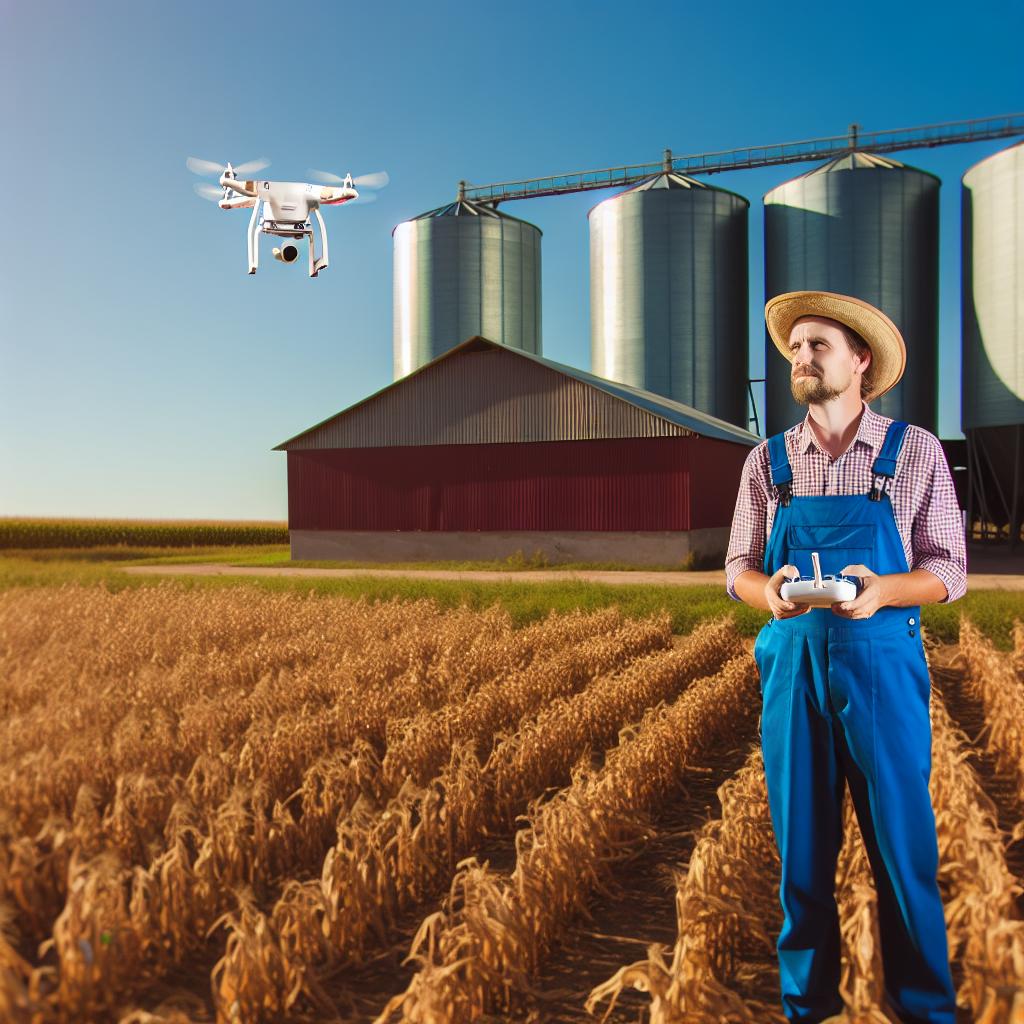
Integrating Drone Technology with Precision Agriculture
Overview of Precision Agriculture
Precision agriculture enhances farming through technology integration.
This approach optimizes field variability in crops.
Farmers leverage data analytics for better decision-making.
Moreover, it reduces waste and increases productivity.
The Role of Drones in Agriculture
Drones revolutionize agricultural practices significantly.
Farmers utilize drones for aerial imagery and analysis.
They provide real-time data on crop health.
Furthermore, drones assist in irrigation management.
This technology helps monitor soil conditions effectively.
Benefits of Drone Integration
Integrating drones with precision agriculture offers numerous advantages.
It increases efficiency and reduces operational costs.
Drones provide accurate mapping of agricultural land.
Farmers can identify pest infestations and disease outbreaks.
Additionally, they can evaluate crop yield forecasts.
Implementation Challenges
Despite the benefits, challenges exist in drone integration.
Showcase Your Farming Business
Publish your professional farming services profile on our blog for a one-time fee of $200 and reach a dedicated audience of farmers and agribusiness owners.
Publish Your ProfileRegulatory limitations hinder widespread adoption.
Moreover, farmers face technical skill gaps.
Investment costs also present a significant barrier.
Future of Drone Technology in Farming
The future of farming increasingly relies on drone technology.
Advancements in drone capabilities continue to emerge.
As a result, farmers gain access to more precise tools.
This innovation will likely promote sustainable farming practices.
Drones pave the way for smarter agriculture.
See Related Content: Improving Farm Productivity With Advanced Management Software
Regulatory Considerations and Compliance for Agricultural Drones
Understanding Regulatory Frameworks
The use of drones in agriculture involves navigating various regulations.
Authorities like the Federal Aviation Administration (FAA) set crucial guidelines.
Farmers must familiarize themselves with these regulations.
This knowledge ensures compliance and reduces legal risks.
Obtaining Necessary Certifications
Pilots must obtain Remote Pilot Certificates to operate drones commercially.
This certification process includes passing a written exam.
Additionally, operators must familiarize themselves with airspace regulations.
Staying updated on certification requirements is essential for compliance.
Compliance with Local and State Laws
Apart from federal regulations, farmers may encounter local laws.
Each state may impose unique restrictions on drone usage.
Farmers should check with their local agencies for specific requirements.
Engaging with local agricultural departments can provide valuable insights.
Safety and Privacy Regulations
Safety is a top priority when operating agricultural drones.
Farmers must adhere to FAA’s safety guidelines for drone operations.
Moreover, respecting privacy laws is essential to avoid legal issues.
Operators should be cautious when flying near private properties.
Insurance and Liability Considerations
Obtaining insurance for drone operations offers protection against claims.
Insurance can cover potential damage to property and crop loss.
Farmers should consult with insurance experts to find suitable policies.
Understanding liability issues helps mitigate risks associated with drone use.
Future Trends in Drone Regulation
As drone technology evolves, regulations will likely change.
Staying informed about upcoming regulatory changes is crucial.
Joining agricultural associations can provide timely updates on these matters.
Farmers must adapt to ensure compliance with new regulations.
Case Studies: Successful Implementation of Drone Technology in Farms
Case Study: Green Fields Organic Farm
Green Fields Organic Farm adopted drone technology for crop monitoring.
They implemented drones equipped with multispectral cameras.
These drones analyzed plant health through aerial imagery.
Subsequently, the farm identified areas needing attention.
This approach enhanced their yield by 15% in the past year.
Case Study: Sunny Acres Vineyard
Sunny Acres Vineyard utilized drones for vineyard management.
They employed drones for precise pesticide application.
Showcase Your Farming Business
Publish your professional farming services profile on our blog for a one-time fee of $200 and reach a dedicated audience of farmers and agribusiness owners.
Publish Your ProfileThis practice reduced chemical use by 25% annually.
Moreover, it improved the quality of the grapes significantly.
As a result, their wine received awards for excellence.
Case Study: Harvest Moon Farms
Harvest Moon Farms implemented drone technology for irrigation management.
Drones equipped with thermal cameras assessed soil moisture levels.
Farmers received real-time data on irrigation needs.
This technology led to water conservation of 30% per season.
Consequently, it reduced operational costs significantly.
Benefits of Drone Technology in Farming
- Drones increase efficiency in monitoring large fields.
- They provide detailed insights for precision agriculture.
- Cost savings arise through reduced resource waste.
- Drones enhance crop management and productivity.
- They streamline the decision-making process for farmers.
Challenges Faced During Implementation
Farmers encountered initial training challenges with drone operation.
Regulatory compliance posed another hurdle for some.
Moreover, high upfront costs of technology discouraged some farmers.
However, the long-term benefits often outweighed these challenges.
Additional Resources
Precision Agriculture: Benefits and Challenges for Technology …
Agriculture’s technology future: How connectivity can yield new growth

